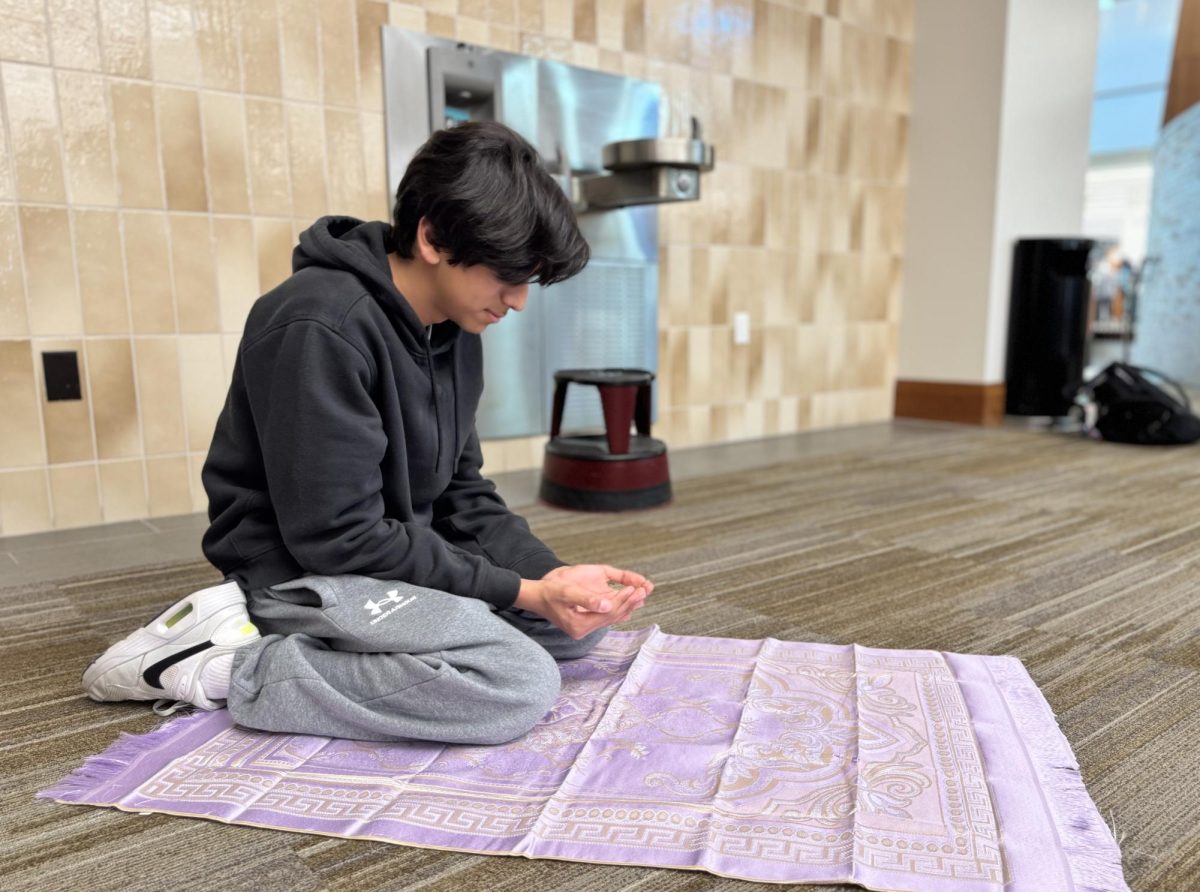By Celina Wu
<cwu@hilite.org>
Junior Olivia Roy is someone that is aware of the potential harms of tanning and uses this knowledge in decisions regarding the activity. “I would definitely not tan regularly throughout the year,” she said. “We all know tanning isn’t great for your skin, and I really don’t see the need to be tan in December.”
Among the ideals of beauty, a perfectly bronzed appearance is what countless people strive for in today’s society. In order to obtain this look, a common method is to visit a tanning salon and lay in a tanning bed that emits intense ultraviolet rays. It is common knowledge that heavy or intense exposure to these ultraviolet rays, either from natural or artificial sources, can be harmful to ones health. However, despite the known risks and possible outcomes of tanning, many continue to tan on a frequent basis and choose to go the route of tanning beds, even with various other less harmful options available. Also, this habit of visiting tanning salons and obtaining the perfect glow that enhances the appearance may not be worth the risks involved.
According to dermatologist Sally Booth, “There are no real benefits of tanning the skin unless the patient has been diagnosed with certain skin diseases that are responsive to ultraviolet light. The short-term risk of tanning is sunburn, and the long-term risks are skin cancer, pigmented changes and the aging and wrinkling of the skin.”
But what exactly is tanning and how does it occur? Booth said that tanning of the skin happens when UVA rays are exposed to the skin’s melanocytes, which then produce melanin, which is the source of the skin’s pigment or color.
Although Roy is conscious of the dangers of tanning, she said she had her first experience of tanning this year before spring break. “I chose to go tanning before spring break this year because I wanted to get a base tan to prep my skin for being in the sun since I burn really easily,” she said. “I tan at Seabreeze, and I started tanning at seven minutes. Now I can go for the full 20 minutes in a regular level one bed or the full 15 minutes in a bronzer bed.”
Booth said getting a base tan may not necessarily prevent people from getting sun burnt. “If you get a base tan from a tanning bed, you are only exposing yourself to UVA rays. When you go into the  sun, you can still burn from UVB rays,” she said.
sun, you can still burn from UVB rays,” she said.
Also, Booth said using tanning beds are worse than tanning in the sun. “To tan the skin, tanning beds use high doses of UVA rays, which increase the chances of getting melanoma and other types of skin cancer,” she said. “Also, the rays destroy collagen, which causes wrinkles and premature aging.”
Besides for the purpose of obtaining a base tan, Roy said she might consider going to the tanning salon just to get a little color before prom this year or winter formal next year.
When limited to only special events, Booth said the occasional tan is better than routinely doing so, but can still be damaging to the skin. She suggested spray-on tanning as a good alternative to tanning beds. “Spray tanning is fast and effective,” she said. “It may take a little practice to get it on right, but it is much safer than tanning beds.”
Roy also said she has tried different methods to appear tanner. She said, “I’ve tried some lotions before. I think Jergens Natural Glow is the best by far.”
Booth said she cautions against tanning, but offers tips for those who tan on a regular basis. “Use a good sunscreen and get gradual color to your skin,” she said. “Monitor your skin for any changes or new moles and be sure to get regular check-ups by a dermatologist.”































![AI in films like "The Brutalist" is convenient, but shouldn’t take priority [opinion]](https://hilite.org/wp-content/uploads/2025/02/catherine-cover-1200x471.jpg)













































![Review: “The Immortal Soul Salvage Yard:” A criminally underrated poetry collection [MUSE]](https://hilite.org/wp-content/uploads/2025/03/71cju6TvqmL._AC_UF10001000_QL80_.jpg)
![Review: "Dog Man" is Unapologetically Chaotic [MUSE]](https://hilite.org/wp-content/uploads/2025/03/dogman-1200x700.jpg)
![Review: "Ne Zha 2": The WeChat family reunion I didn’t know I needed [MUSE]](https://hilite.org/wp-content/uploads/2025/03/unnamed-4.png)
![Review in Print: Maripaz Villar brings a delightfully unique style to the world of WEBTOON [MUSE]](https://hilite.org/wp-content/uploads/2023/12/maripazcover-1200x960.jpg)
![Review: “The Sword of Kaigen” is a masterpiece [MUSE]](https://hilite.org/wp-content/uploads/2023/11/Screenshot-2023-11-26-201051.png)
![Review: Gateron Oil Kings, great linear switches, okay price [MUSE]](https://hilite.org/wp-content/uploads/2023/11/Screenshot-2023-11-26-200553.png)
![Review: “A Haunting in Venice” is a significant improvement from other Agatha Christie adaptations [MUSE]](https://hilite.org/wp-content/uploads/2023/11/e7ee2938a6d422669771bce6d8088521.jpg)
![Review: A Thanksgiving story from elementary school, still just as interesting [MUSE]](https://hilite.org/wp-content/uploads/2023/11/Screenshot-2023-11-26-195514-987x1200.png)
![Review: "When I Fly Towards You", cute, uplifting youth drama [MUSE]](https://hilite.org/wp-content/uploads/2023/09/When-I-Fly-Towards-You-Chinese-drama.png)
![Postcards from Muse: Hawaii Travel Diary [MUSE]](https://hilite.org/wp-content/uploads/2023/09/My-project-1-1200x1200.jpg)
![Review: "Ladybug & Cat Noir: The Movie," departure from original show [MUSE]](https://hilite.org/wp-content/uploads/2023/09/Ladybug__Cat_Noir_-_The_Movie_poster.jpg)
![Review in Print: "Hidden Love" is the cute, uplifting drama everyone needs [MUSE]](https://hilite.org/wp-content/uploads/2023/09/hiddenlovecover-e1693597208225-1030x1200.png)
![Review in Print: "Heartstopper" is the heartwarming queer romance we all need [MUSE]](https://hilite.org/wp-content/uploads/2023/08/museheartstoppercover-1200x654.png)


Connor Rowe • Oct 7, 2009 at 2:29 pm
NOT SEXYYYY, lede showed potential but is not there u gotta work it up